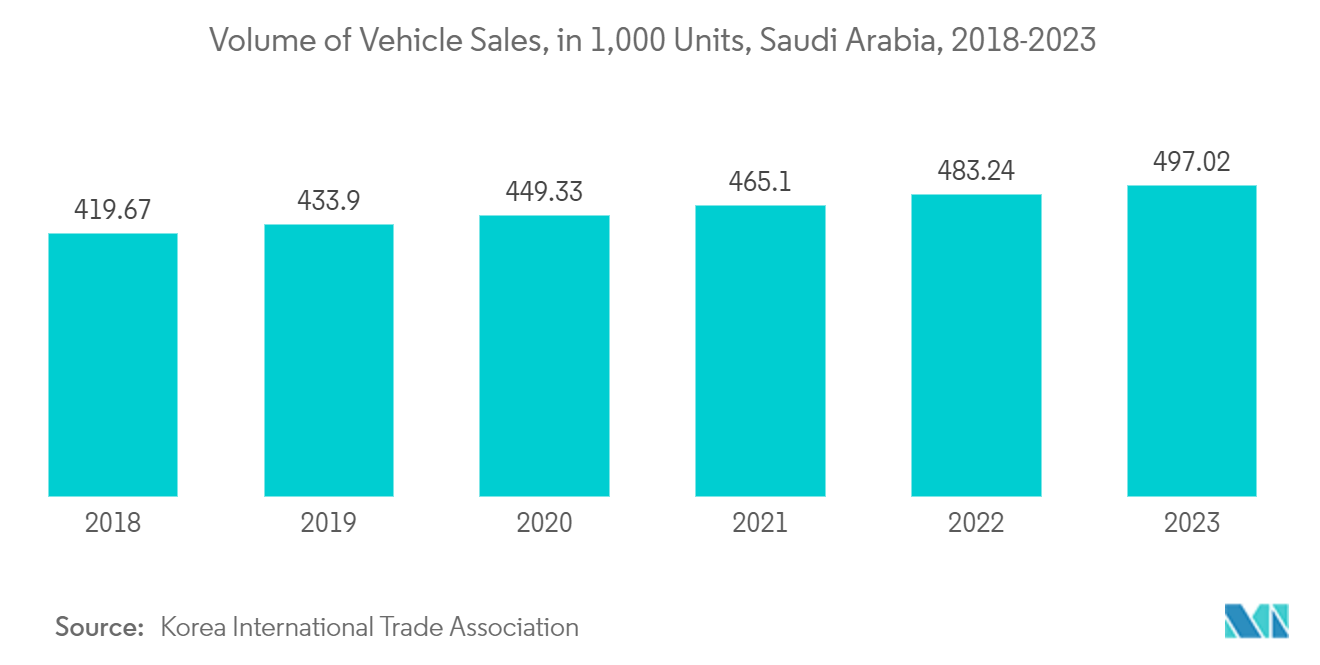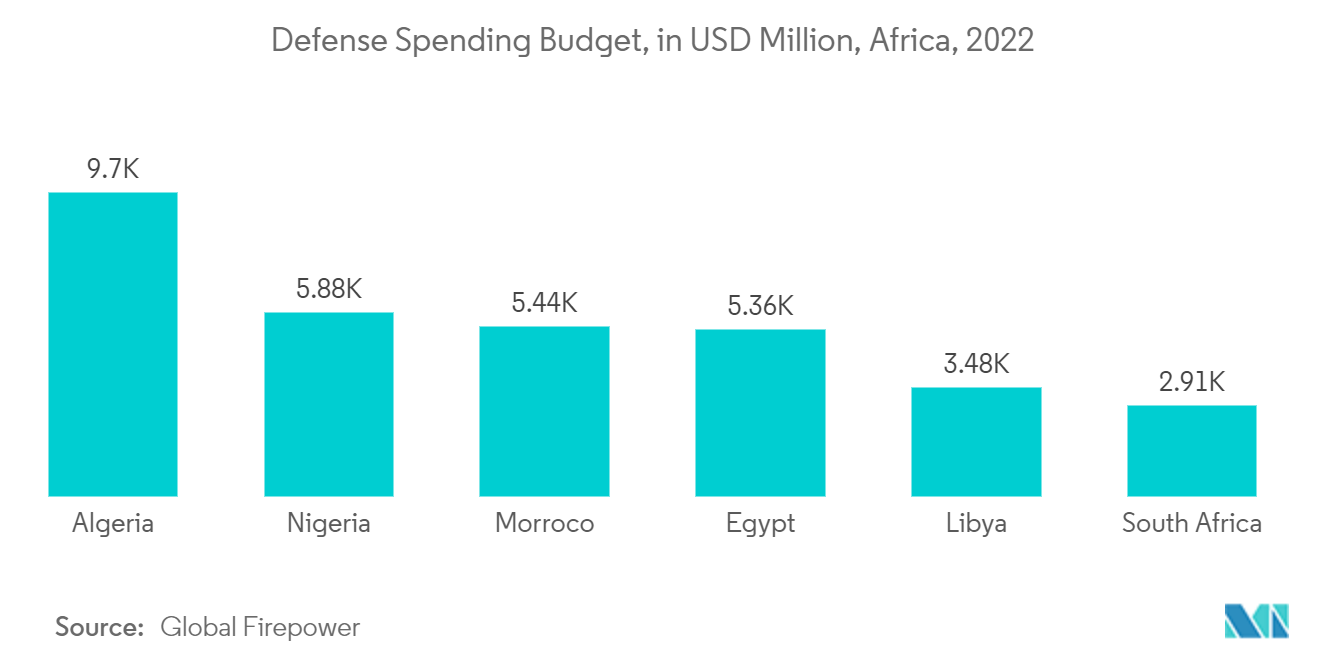Market Trends of MEA Thermal Imaging Systems Industry
This section covers the major market trends shaping the MEA Thermal Imaging Systems Market according to our research experts:
Automotive Sector is Expected to Drive the Market Growth
- The automotive industry uses thermal imaging as part of the safety system (E.g., identification of animals or humans on the road and warning the drivers before they encounter these potential hazards). Rear-view visibility systems (backup cameras) are now becoming mandatory on all new light vehicles sold in the United States. With autonomous cars coming into the picture, this technology can facilitate automatic breaking by distinguishing based on object size.
- Furthermore, in January last year, OmniVision, a global developer of semiconductor solutions such as advanced digital imaging, analog, and touch and display technology, announced the latest addition to its ground-breaking Nyxel near-infrared (NIR) technology family at CES. The new OX05B1S is the first 5-megapixel (MP) RGB-IR BSI global shutter sensor for in-cabin monitoring systems in the automotive industry (IMS). It has a 2.2m pixel size and 940 nm NIR sensitivity for the best performance in low light conditions; it has a wide field of view and enough pixels to see both the driver and the occupants.
- According to Korea International Trade Association, The volume of vehicle sales in Saudi Arabia recorded 483.24 thousand units in 2022, and it is forecasted at 497 thousand units for 2023, continuing the upward trend. Further, the country is developing a car manufacturing city as a part of the 2030 Vision reform plan. This move is expected to increase the demand for studied market.
- Moreover, in January 2022, Teledyne FLIR announced the availability of an expanded free thermal dataset for researchers and developers working on Advanced Driver Assistance Systems (ADAS) and self-driving vehicles. The expanded starter dataset nearly doubles the original, industry-first free dataset and includes over 26,000 annotated images from the United States, England, and France in day and nighttime conditions. It also triples the number of categories, with people, bikes, cars, motorcycles, buses, trains, trucks, traffic lights, fire hydrants, street signs, dogs, skateboards, stroller scooters, and other vehicle labels now included. The expanded free starter thermal imaging dataset enables the automotive and academic communities to evaluate the performance of vehicle safety algorithms quickly.
- Furthermore, the automobile industry is now gaining traction with high-tech autonomous cars, also known as Advanced Driver-Assistance Systems (ADAS) or driverless vehicles. Multiple sensors, including thermal cameras, Radio Detection and Ranging (RADAR), Light Detection and Ranging (LIDAR) sensor, and proximity sensor, substitute drivers in these cars to enable automated driving, navigation, and better situational awareness.
- Such developments in the automotive industry in the region may further create significant growth in the studied market.

Aerospace and Defense Holds Significant Market Share
- Thermal imaging systems allow ground troops to detect differences in temperature between inanimate objects and enemy forces. These devices collect the infrared radiation in the camera's field of vision and use that information to create an image. In addition, the military thermal imager is one of the essential optical devices for hunting or modern combat. Fog or dust, day or night, the thermal imaging device delivers flexibility, versatility, and tactical superiority at any time of the year and in any weather.
- Governments all across the region are investing in next-generation technology by giving better and more accurate information to military troops. The use of IR thermography equipment in the military industry has grown, influencing the rise of infrared cameras, particularly short-wavelength IR cameras.
- For instance, in April last year, Teledyne FLIR, part of Teledyne Technologies Inc., announced the release of its high-performance Hadron 640R combined radiometric thermal and visible dual camera module. The Hadron 640R design is optimized to integrate uncrewed aircraft systems, unmanned ground vehicles, robotic platforms, and emerging AI-ready applications where battery life and run-time are mission-critical.
- There is a significant trend of increasing crime and violence in the region. As a result of this element, the budgets of the homeland security forces have increased to purchase advanced protection systems and devices. With an expanding number of non-lethal and deadly weapons, modern combat has grown increasingly asymmetric. According to Global Firepower, as of the last year, Algeria had the highest defense spending budget in Africa, around USD 10 billion. Nigeria and Morocco followed, with a budget of roughly USD 5.9 billion and USD 5.4 billion.
- Furthermore, the governor of GAMI announced that the Saudi Arabia Government (SAG) is looking forward to investing USD 20 billion in its military industry for the next decade. Out of the investment, half of this amount shall be dedicated to the general defense industry, and the remaining half will be invested in R&D. Furthermore, the country plans to increase its military R&D spending from 0.2% to approx. Around 4% of its armament's expenditure by late 2030. Such developments by governments in the region are anticipated to drive the growth of the market during the forecast period.


